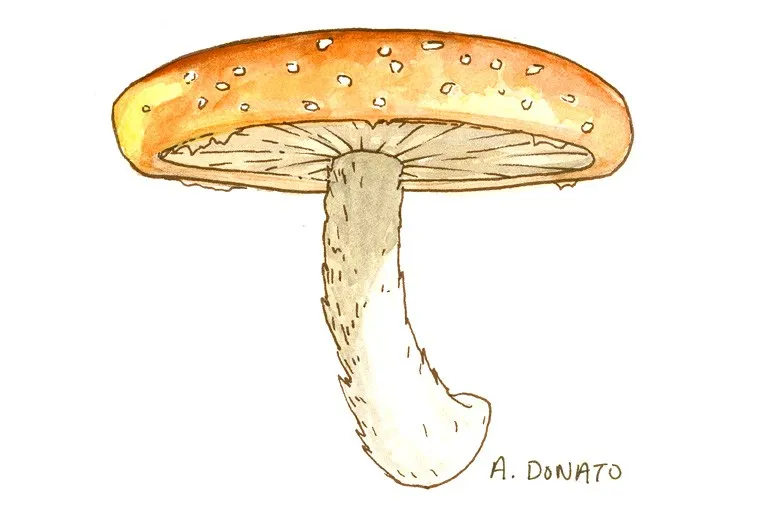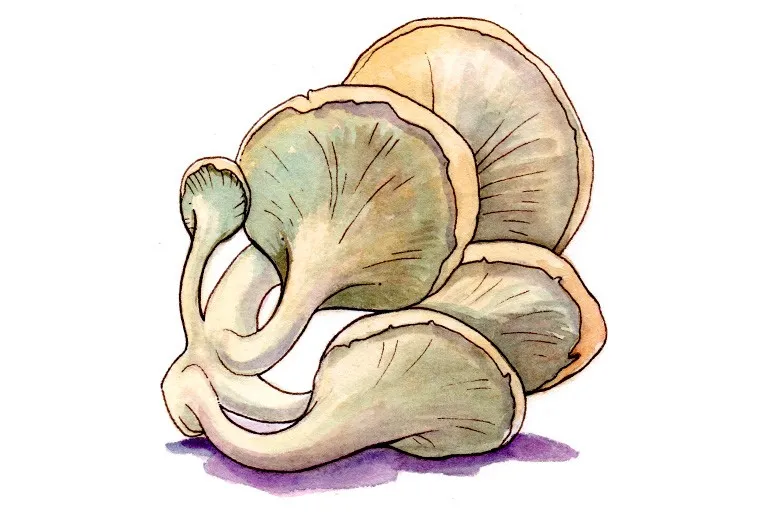WHAT IS A FUNCTIONAL FOOD?
By definition functional foods need to be everyday foods that produce positive effects on metabolism beyond their nutritive value, enhancing well-being and reducing risk of disease (1). Gourmet’ mushrooms are a blanket term for a range of 100+ mushrooms that have fallen underneath it. Although, many Fungi carry medicinal properties and 2000 different varieties are considered edible as well as having medicinal properties such as the well-known Shiitake and Oyster mushroom varieties. Whereas well known medicinal species such as Turkey tail and Reishi, which are considered unpalatable, are mainly extracted into capsule or ethanol mushroom supplements (1).


Figure 1. (Top) Shiitake also known as Lentinula edodes (4) (Bottom) Oyster also known as Pleurotus ostreatus (5)
BUT HOW EXACTLY DO MUSHROOMS EXERT BENEFICIAL EFFECTS BEYOND THEIR NUTRITIVE VALUE?
Well, mushrooms are composed of a compound that is finding potential use in the biotechnology industry called Chitin (pronounced Ky-tin). Exactly what makes this compound so interesting is a derivative of chitin that is released when cellular walls of fungi are broken down, namely β-Glucans. These compounds can function on an epigenetic level i.e. where gene function and cellular signalling adapt to environmental stimulus and in turn shape what type of genetic modification is expressed (2). Dectin-1 is, in humans, part of a super family of receptors that recognize β-glucans from fungi and plants that influence innate immunity. ⁽³⁾ Depending on the molecular weight of the β-glucans there are higher order immune cascades that are activated while the smaller soluble β-glucans produce no signal or only weak signals (nonetheless there is minor stimulation). Thus, the smaller 1 3 β-glucans may function as a nutritional source providing a range of positive effects beyond their nutritionally derived benefits (3). These chitinous cellular walls primarily composed of 1 3 glycosidic linkages and 1 6 linked side branches, may be broken down by heat treated processes using water and mechanical treatment into smaller, more easily digestible microparticulates. The extracted compounds include β-glucans and related glycoprotein that are immunologically-active polysaccharide molecules (3). β-glucans and bio-active nutrients such as B vitamins, vitamin D₂, minerals, essential/nonessential amino acids and branch-chain amino acids (BCAA’s) are only accessible, by the human gut, once the cellular walls of the fungi are broken down. As chitin is heat sensitive, heat-treated procedures can break these tough compounds down. Thus, whether the extraction method is you cooking up a storm in the kitchen or consuming a mushroom product that has gone through hot water extraction you are allowing for more readily absorbable β-glucans by the immune system.
The immune response to β-glucans is dependent upon a- or β-glucans structure, and molecular weight, explaining some of the differences in immune response to each Fungi's unique species profile (3). Therefore, getting to know your exotic mushrooms in more detail not only has potential health benefits but unlocks their unique ‘umami’ flavour.
Drop a comment and let me know what species you are wanting to know more about !
REFERENCES: